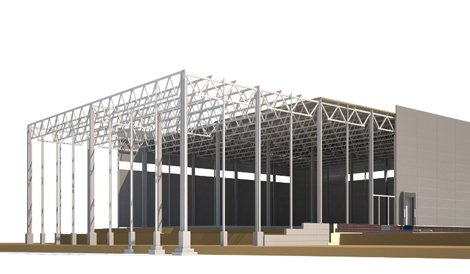Modular data centers continue to grow in popularity, as evidenced by growing investment in modular technologies and by a recent spate of modular deployments by organizations across a diverse range of geographies and industry sectors. Organizations cite various reasons for investing in, or being attracted to, modular solutions. These include the often significantly shorter timeframes needed to plan and deploy a data center. They also include reduced complexity, both in the deployment and operation of facilities and enhanced performance, thanks to a module’s standardized, repeatable design.
Many modular vendors and some end users also refer to cost savings over traditional data centers as a key attraction. But the question of whether modular data centers offer cost advantages over traditional builds is more complicated than some commentators suggest. Some end users testify to cost-savings their own modular data centers have enabled over a range of traditional-build alternatives; others refer not to absolute cost-savings but rather to the modular facility’s ability to give them greater cost predictability.
Cost predictability is not exclusive of cost-savings. Nor, however, is it the same thing. In addition to making the costs of data center deployment more predictable, modular end users assert that the modular model gives them greater control over operational costs.
To understand the relative cost advantages of modular facilities over traditional alternatives, a total cost of ownership (TCO) approach is required. This involves considering the entire lifecycle of a data center – from the planning and design stages through to the eventual decommissioning of the facility.
Some attempts to compare the costs of modular and traditional models only take into account the cost of deploying and operating the data center. This approach, however, means that many of the costs that are applicable to both modular data centers and traditional builds are overlooked. In addition, it is important to acknowledge the range of hidden costs that can arise in the case of both traditional and modular deployments.
Although the actual cost of deploying a data center will vary across different deployment models (such as traditional versus modular), and according to the specific circumstances of individual deployments (size, location and so on), it is possible to identify broad cost categories applicable to all data centers. These include costs associated with planning and designing a new deployment, costs involved in deploying and operating the data center, and costs associated with decommissioning a data center once it has fulfilled its useful purpose.
Planning and preparatory costs
Regardless of the type of data center, any new deployment requires a range of activities that must take place before physical deployment, assembly and installation can occur. These planning and preparation activities come with their own costs, as well as risks and potential complications for data center operators.
Before preparing a site for the deployment of a new data center, planning permission must be obtained and construction permits issued. New sites will also need to be inspected, and this will involve inspection fees and the need to allocate sufficient time for inspection to take place.
When selecting a site for a data center, you need to consider the physical proximity and resource concerns, such as access to target markets, the presence of good connectivity and the availability of adequate and sustainable power. You must also consider risks – natural disasters, sabotage, even possible damage from road traffic. Furthermore, in addition to selecting a site according to physical, environmental and resource criteria, it is likely the site will need specific work before deployment can begin.
Many of the tasks associated with site preparation and design need to occur regardless of whether a traditional facility or a modular data center is being deployed. In deployments that involve the use of an existing building (rather than a new construction), work may be required to renovate and upgrade the structure of the building.
In traditional builds, several additional costs can emerge because of the design process itself. In the case of traditional facilities, it is typical for the design process to involve several different companies and the participation of numerous specialists, including mechanical and electrical engineers and the IT and Facilities departments of the end-user organization. The process by which these different parties come together requires numerous meetings spread over a timeframe that is often hard to predict.
Depending on the length of the design process, the number of meetings required and consultants involved, the costs have the potential to spiral. Costs arise not only because of the need to pay contractor fees, but also because any delay in deploying and commissioning the data center can result in lost business for the operator.
In the case of a modular facility, most will be designed and tested in the vendor’s R&D lab prior to manufacture (depending on the definition of ‘modular’). End users are not directly involved in the design process because a facilities module is a pre-assembled, pre-integrated unit that follows the design specifications of a modular vendor. In addition, there is no need to involve external contractors and engineers in the design process. This reduces the complexity of the process and helps to eliminate the risk of delay.
Tomorrow, in the second part of his article on modular data center costs, Chris Drake will look at deployment costs, operational costs and decommissioning costs. You can read the full article in FOCUS 31. see the digital edition here.
DCD Intelligence recently released a whitepaper titled Assessing the Cost, Modular Vs Traditional Build, undertaken with modular data center providers IO, Colt and Gardner. You can find out more about the report here.

